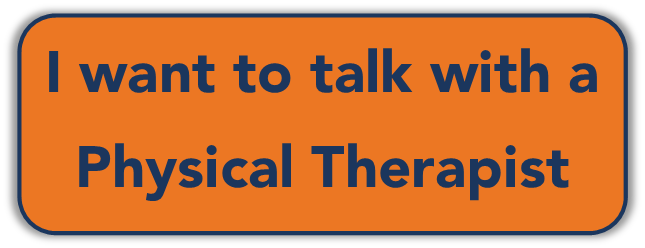Whether your mom has fallen, your dad isn’t as steady on his feet as he once was, or you recently had a slip, trip, or fall, an older adult who falls is at risk for serious injury or death. The long-term impacts of a fall for an older adult can be costly, and not just financially. When older adults fall, they have a 1 in 4 chance of fracturing a hip, which is going to cost you your mobility, your independence, and potentially your life (What is the life expectancy after a hip fracture?). Even if you don’t break a hip, getting up off the ground may be difficult, you may suffer from a head injury, and some seniors will not live through their fall. When you or a loved one have fallen, it is too late to stop that fall, but you can prevent future falls.
So, how do we prevent the elderly from falling? Prevention rather than reaction is the key to preventing falls in the elderly and it comes from two main areas: environmental and physical.
Just call to set up a free consultation today.
What Increases the Risk for Falls?
Falls risk increases as we age, but it does not increase the same for everyone. Meaning that risk factors for falling are not evenly distributed across all people. The reason for that is the difference in environmental and physical risk factors for falls.
Environmental Risk Factors for Falls
When it comes to the risk factors of your environment, you need to be aware of your surroundings. Your environment pertains to your living space and your daily activities. Some common environmental risk factors that increase the risk of falling for older adults are
- Stairs: Stairs become more difficult to navigate as we age, particularly if we have become less active and weaker. Stairs present unique difficulty and one that should not be underestimated. Because of the increased elevation with falls from stairs, there is a greater risk of injury or death.
- Pets: Pets are great for a lot of things (love, companionship, joy), but they can be a real challenge for someone dealing with mobility issues or imbalance. Pets can be spontaneous, but if you cannot respond to their ever-changing movements and they dart in front of you, the reason for your fall won’t matter, you are still going down.
- Lighting: Low light is a risk factor for falling because it leaves you vulnerable to tripping over an unidentified object. Low light may also hide elevation changes or unsteady surfaces, which can greatly increase your chances of falling.
- Accumulation: Throughout our lives, we gather many possessions and memories, but if these possessions are not properly cataloged and stored, we risk tripping or slipping on them. If you are worried about losing out on prized possessions, consider passing them on to the next generation to be loved.
Physical Risk Factors for Falls
- Musculoskeletal: Your Muscles and Bones are the primary factors in keeping your body upright. They are essentially the frame and exterior of you, and they must be strong enough to support you. When you walk you alternate legs, so even if you can stand up, you have to be able to stand on a single leg. If you cannot, you are at risk of falling every time you take a step.
- Balance System: Your balance system coordinates with your muscles and bones. It is made up of your vision, your vestibular, and your somatosensory systems. These three sensory systems work in conjunction to alert your body to obstacles and physical changes in your environment (remember you need to see your dog know he ran in front of you)
- Pelvic Health: Your pelvic health is crucial to your overall health. Your pelvic floor is the base of your core muscles and it is vital for a variety of daily functions including breathing, walking, and using the restroom. When your pelvic floor is weak, as indicated by bladder leaks, incontinence, or prolapse, you put yourself at greater risk of falling.
Isn't it time you called your Oklahoma City Physical Therapists to see what FYZICAL can do for you? CALL FYZICAL

Why Do I keep Tripping and Falling?
Or why does mom or dad keep falling? You can trip and fall for several reasons, ranging from your balance system not functioning properly to your physical health being poor to pelvic floor dysfunction. Without a thorough assessment of all contributing factors, we cannot know exactly why you keep tripping and falling.
So, how do you know if you are too weak to prevent a fall? You have to check your balance. A physical therapist trained in balance rehabilitation will assess a variety of factors that may be contributing to your trips, slips, and falls that go beyond just your physical attributes. But if you are not already working with a physical therapist for preventing falls, you could complete a Timed Up & Go (or TUG).
How Can I Test My Balance at Home? (recommended only with supervision)
There are a variety of tests that indicate that you might be too weak, which can lead to a fall. The TUG is a simple but helpful test to help prevent the elderly from falling. When it comes to fall prevention, the TUG is a useful test because it closely mirrors things we all do multiple times each day. The TUG evaluates how well you are going to get up to get food from the fridge, it evaluates how well you can get up to greet a family member or friend at the door, and it evaluates how well you are going to make it to the bathroom when the time arises. There are 5 steps in the TUG:
- Stand up out of your chair
- Walk 10 feet, at your normal pace
- Turn around
- Walk 10 feet back to your chair, at your normal pace
- Sit Down Again
All 5 steps of the TUG should be completed in less than 12 seconds. If it takes you longer than 12 seconds, you are at risk of falling (it is important to note that the TUG is a good indicator, but if you feel unstable or imbalanced, you likely need additional screening or assessment, even someone who passes the TUG can have a severe fall).
Each of these steps could indicate physical weakness. For example, you should be able to stand up out of a chair without using your hands to propel yourself up and out of the chair, or while walking are turning you should have full strides that do not include you shuffling your feet or having to hang on to walls or furniture. Evening sitting down should be a controlled movement. If you are not in control when you are trying your best, you will not be in control when you are tired or sore. Remember that the tug mimics events that happen regularly every day. One of those events is getting up to use the restroom, and whether you have thought about it or not poor pelvic health increases your risk of falling. If you want to prevent the elderly from falling, if you want to stop yourself from falling, you want to stop bladder leaks and incontinence.
Schedule a Free Consultation today.
What is a Falls Prevention Program?
Prevention, not reaction, starts with understanding the risk factors that contribute to falling. There is no easy quick-fix solution to preventing older adults from falling. There is no magic balance pill, and the fountain of youth isn’t available here in Oklahoma City, but ignoring this serious problem isn’t going to make things any better. To prevent falls in the elderly and older adults, we need to take a comprehensive approach to care. A truly holistic view of the person will include more than just leg strength and knee flexibility, it will take experts who are focused on fall prevention treating the orthopedic, the pelvic floor, the neurologic, and the sensory challenges that often come with aging. And it will take people wanting to make a change for the better who recognize that they are the only ones who truly have control over their health.
Specific programs for fall prevention can vary from patient to patient; however, the basic objective is to reduce the rate or risk of falls for people. And to set up your specific plan of care we need to know what is contributing to your falls. That means a thorough evaluation of you.
Most fall prevention programs have a targeted focus on the physical well-being of the participants. This makes perfect sense. When you fall, you are most likely to be standing, potentially walking. To stand, your muscles and bones must be able to support your weight. If you are too weak to hold yourself up, balance is going to be a secondary consideration in preventing falls. But a comprehensive fall risk program cannot stop at assessing your physical fitness; A comprehensive program to prevent falls in the elderly will assess the functionality of your balance system, your pelvic health, and your unique environmental risk factors that contribute to an increased risk of falling. It is also going to take the information from your assessment to establish a unique program targeting your major concerns and risk factors first and working backward to alleviate the more minor risks as your balance improves and your falls risk decreases.
FYZICAL Therapy & Balance Centers have developed a world-class balance rehabilitation program that can be tailored to each patient’s individual needs. As the only Level III balance rehabilitation program in Oklahoma City, the physical therapy provided for patients at FYZICAL Oklahoma City cannot be matched. Our Physical Therapists will conduct an evaluation using state-of-the-art balance assessment technology and provide safety and security throughout your treatment with our safety overhead system. If you are unsure about your balance, or you want to see the FYZICAL Difference for yourself, schedule a free consultation today.
-FYZICAL Therapy & Balance Centers of Oklahoma City
References:


